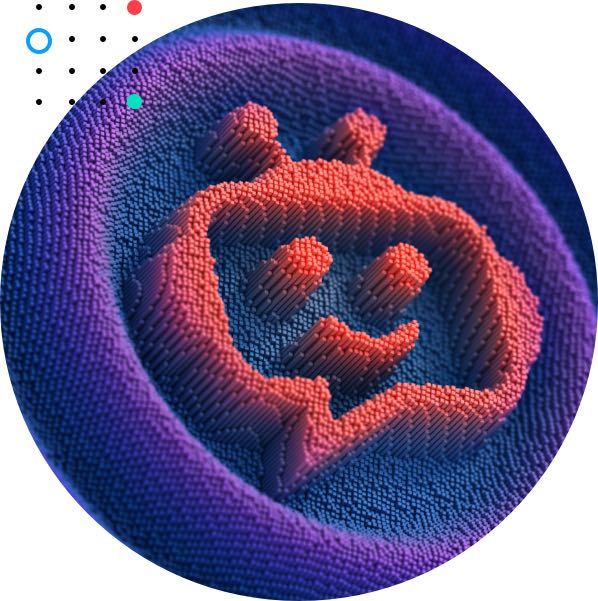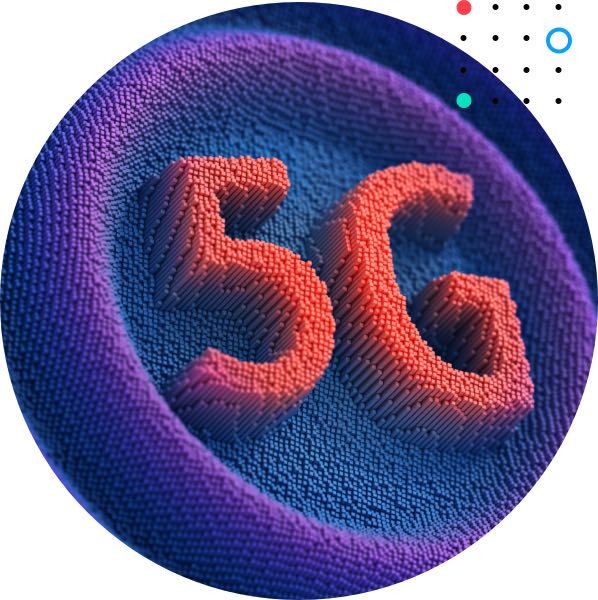What issue can we solve for you?
Type in your prompt above or try one of these suggestions
Suggested Prompt



Insight
Sailing the Digital Seas: Navigating Key Trends Shaping the Consumer Electronics Industry in 2024
Sailing the Digital Seas: Navigating Key Trends Shaping the Consumer Electronics Industry in 2024
As the world continues to grapple with uncertainties tied to inflation and supply chain disruptions, the consumer electronics industry is navigating challenging, even uncharted waters. Throughout 2023, the industry has witnessed shifts in consumer preferences post-pandemic, the remarkable ascent of generative AI and increased integration of the connected world and internet of things (IoT).
Looking to 2024, a significant paradigm shift is on the horizon. The rapid adoption of new technologies has started to uncover digital delayers, highlighting the need for enterprise-wide transformation in the consumer electronics and white goods sectors.
From the expanding realm of TikTok commerce to the ubiquity of connected devices, here are some of the upcoming product and investment trends that will shape the consumer electronics landscape in 2024. The main focus? How generative AI, powered by 5G and edge computing, is creating ecosystems that can power new sustainable business models, giving rise to the next wave of growth.
“2024 will see the rapid rise of AI-powered everything, coupled with true 5G integration. The average consumer will be faster, better connected and more informed than ever before.”
Nathan Thompson , Senior Director, Consumer Electronics Lead, Consumer Products
All hands on tech! Plug in and delve into the exciting developments set to redefine the industry.
-
Starting with AI: because, seriously, where else would we begin?
In the wake of multiple technologies hailed as “the next big thing” only to fade away, generative AI emerges as a true contender.
While 2023 saw brands dipping their toes into the waters of AI with a test-and-learn approach, the coming year promises more significant and widespread shifts in adoption. Here are some specific examples of how AI will impact 2024:

Personalized experiences with segments of one
The vast amount of data that AI can analyze opens the door to rapidly creating personalized user experiences in real time. Connected devices, each brimming with millions of data points, offer insights into habits, preferences and usage patterns. This wealth of information will power promotions, marketing initiatives, sales collateral and predictive market trends, ushering in a new era of hyper-personalization.
The rise of the enhanced adviser
While virtual assistants like Siri and Alexa have been part of daily life for some time, 2024 will witness the mainstream integration of virtual adviser technology on a more sophisticated level. Connected to commerce sites, intelligent advisers will serve as a low-cost support channel, engaging users with a “human-like” interaction. Expect these advisers to suggest complementary products and services, optimizing promotions and basket value as they become a staple in enhancing user experiences.
Real-time insights for rapid time to market
Real-time analysis of signals from social media and sentiment will uncover consumer trends as they emerge. By tapping into sources like wearable data, TikTok comments and Amazon reviews, brands can swiftly iterate products to better meet consumer needs. This nimble approach, linking insights to supply chains, is particularly crucial in a landscape where one-off collaborations and launches are gaining momentum, positioning brands to outpace the competition.
Proactive maintenance with predictive insights
Moving beyond the excitement of new product launches, AI will empower consumer electronics and white goods manufacturers to leverage data from existing devices. Predictive maintenance, fueled by AI, will enable proactive identification and prevention of faults, reaching out to consumers before a device breaks down. This not only boosts consumer confidence but also has the potential to prompt pricing revisions as the overall cost of quality decreases.
In the dynamic realm of 2024, AI is not just a buzzword; it's a transformative force shaping the way people interact, create and innovate. It is life-changing in a true sense. As consumer electronics firms navigate these changes, they will need to embrace the opportunities that generative AI presents, ushering in a future where technology seamlessly aligns with human experiences.
-

Embracing the 5G revolution: the era of connected living in 2024
In the upcoming year, the market will witness the long-teased impact of 5G technology and edge computing. The high-speed, low-latency 5G network is set to unlock a plethora of opportunities, especially with the emergence of “phygital” products—products that seamlessly blend the physical and digital worlds, leading to an enhanced user experience.
The emergence of more accessible edge computing, which empowers phygital products to process data locally, and smart device advancements is propelling real-time data processing, leading to enhanced scalability and consumer data security.
These are the smart experiences and phygital products to come in 2024, powered by a “5G edge.”
Elevated everyday living
While smart home devices like connected ovens, TVs, and fridges were once considered luxury items for the technology-conscious consumer, they are now becoming essential components of an expanding interconnected ecosystem.
This evolution to mass adoption includes traditional devices and innovative additions like smart toothbrushes, air purifiers and air conditioners that adapt to temperature habits and preferences. Picture coffee makers that sync with sleep patterns to brew personalized coffee, and wearables that communicate with smart gym equipment to suggest taking it easy for a couple of days.
Unlocking value through smart products
Smart wearables offer more than just convenience or interesting information for consumers—they play a pivotal role in refining offers, campaigns and services by accumulating valuable user data.
Edge computing will allow faster processing of this data to serve real-time content that can also connect with other smart home devices. This not only enhances the consumer experience but also sets the stage for exciting brand collaborations. Imagine a smart toothbrush partnering with a personal care brand to create a custom toothpaste, or a home speaker system, TV and lighting communicating to deliver a special festive atmosphere during the holidays.
Beyond convenience: transforming healthcare with tech
Fueled by a growing focus on health and wellness, consumers are increasingly investing in biometric wearables and health tech. These devices will go beyond convenience and anti-aging, but can also be genuinely lifesaving, from detecting drops in vital signs and monitoring blood sugar to devices that stimulate the vagus nerve to promote sleep and relaxation, consumers across demographics are becoming more willing and open to using wearables to monitor their health.
“5G is reshaping how consumers interact with technology, and the intersection of consumer interest and advanced tech will promote integration and personalized experiences. Expect to see 2024 be the true rise of the connected wearable.”
Nathan Thompson , Senior Director, Consumer Electronics Lead, Consumer Products
Navigating the seamless future: the challenge of interconnected ecosystems
In an increasingly phygital world, the demand for a connected ecosystem has never been greater. While innovative products take center stage, the supporting apps and ecosystems must complement, not hinder, the overall experience.
Unfortunately, many product advancements fall short due to overly complex apps, limited integration and inconsistent user experiences, often across multiple apps for the same brand. Tech for tech’s sake, as it were.
The path forward involves a shift towards seamless interconnectivity and ecosystems. Standardized protocols and interfaces are crucial to enabling experiences that transcend products, devices and platforms. This evolution is essential for creating a cohesive brand and user experience that consistently adds value.
A potential solution? Enter super apps, the all-in-one platforms that unify control and data insights, unlocking the full potential and convenience of smart devices for the consumer.
Instead of expecting consumers to download five to 10 apps to manage their electric toothbrush, washer and dryer and sound and lighting system, a super app allows a family to manage an entire portfolio of their devices, analyze their energy consumption and receive personalized insights, all in one place.
Super apps are essential to improving user experience and increasing customer lifetime value by keeping consumers within an ecosystem.
By embracing super apps in the early days, appliance and smart electronics brands can unlock the true potential of the smart home market, driving efficiency, enhancing user experience and securing a competitive edge in the ever-evolving landscape.
Yet, achieving this interconnected utopia is far from simple. Organizations often wrestle with inherent silos—be it by region, function or product. The challenge lies in scaling and integrating new technologies, requiring a fundamental rethink of operating and business models. Electronics firms are adapting to enhance organizational agility, integrate data into decision-making processes and operate at a pace previously unexplored.
Overcoming the user experience challenge will define success and pave the way for a more holistic and user-centric experience across the digital and physical realms.
-
Model behavior: embracing change in electronics business strategies
As technology continues to advance, the electronics industry is witnessing a strategic shift, including the adoption of direct-to-consumer (D2C) and service-based business models. While executing D2C models has thus far posed challenges, digital business transformation is making D2C more scalable and cost-effective.
Establishing an online sales and services channel ensures margin retention and fosters direct interaction with consumers, yielding valuable first-party data. This data serves as a catalyst, powering innovative products, loyalty programs and personalized offers within an omnichannel environment.

D2C empowers brands with control, collaboration and efficiency in e-commerce
Beyond data, the D2C model affords greater control over supply chains, customer experience and pricing. The increasing prevalence of marketplaces and partnerships has been a key part of this transformation. E-commerce no longer demands hefty investments in complex back-end systems, with readily available out-of-the-box solutions and marketplace collaborations. Successful electronics brands are leveraging marketplaces to sell refurbished or “pre-loved” goods, even exploring peer-to-peer sales models with an approved status.
The success of a D2C channel also prompts a reevaluation of the role of physical retail. Brands are shifting towards branded Experience Centers and pop-up stores, replacing traditional retail spaces with immersive, technology-driven experiences—utilizing augmented reality/virtual reality AR/VR to showcase products that align with brand visions. This evolving landscape opens exciting possibilities and alternatives to the conventional big-box electronics retail model.
Subscription-based model emerges for small devices and wearables with exclusive content and services
The parallel realm of innovation and reinvention is witnessing a notable surge in service-based and subscription business models. Smaller devices and wearables are increasingly paired with subscription-based ancillary services like apps, networks or premium branded content. Anticipate a rising trend in subscriptions offering extended warranties, on-demand services and exclusive collaborations with other providers.
The challenge for brands? Maintaining these subscriptions' relevance, freshness and value, ensuring they remain exclusive and continue to drive customer lifetime value.
Embracing these changes positions electronics firms to thrive in an ever-evolving market that shows no sign of slowing down. In the phygital world, businesses have everything to play for.
Embracing sustainability in consumer electronics
In the consumer electronics space, digital transformation is intricately tied to sustainability, encompassing eco-friendly designs, recyclable packaging, sustainable manufacturing and a heightened focus on repairability and recycling. Yet only about one-third of consumers, irrespective of location, plan to stick with sustainable products if prices increase, according to a Publicis Sapient survey.
Consumers are seeking products that last longer and are more durable, justifying higher initial costs: product durability tops the list of sustainability practices, as rated by consumers. Extending product lifecycles is likely to involve greater upgradability and recyclability, along with increased support for second and third ownership cycles. This shift presents opportunities for brands to offer value-added products and services to those buying in the pre-owned market. Ultimately, the key to a successful move towards long-term sustainability lies in finding solutions that are scalable, profitable and sustainable, which remains a challenge.

Understand Consumer Opinions on Sustainability in 2024
Access the opinions of over 6,000 global consumers in several different regions to see their top concerns about corporate sustainability practices and how much value they place on different types of sustainable consumer goods.
Looking forward to 2024, consumer electronics brands stand at the forefront of innovation and seek to secure relevance, wallet share and consumer attention. Companies that integrate sustainability into their end-to-end transformation journey are poised to propel themselves toward another year of rapid advancement.
The future of the consumer electronics industry
Looking forward to 2024, consumer electronics brands stand at the edge of innovation as they seek to secure relevance, wallet share and consumer attention. The difficult bit for many is identifying where to start, knowing that the value proposition and start point will be different for each business, dependent on current maturity and complexity.
Combining these factors to create value is challenging, and it’s easier to fall into the trap of the status quo, not knowing which investment is least risky and thus not making any at all. Fortunately, most of these initiatives require a relatively small upfront outlay for a rapid proof of concept which can then be used to unlock future value. Generative AI prototypes can be active in days and weeks, not months and years. The future is readily accessible for those that can seize it.

Get in touch with Publicis Sapient’s consumer electronics center of excellence to integrate artificial intelligence, D2C sales models and profitable sustainability into your 2024 brand strategy.







